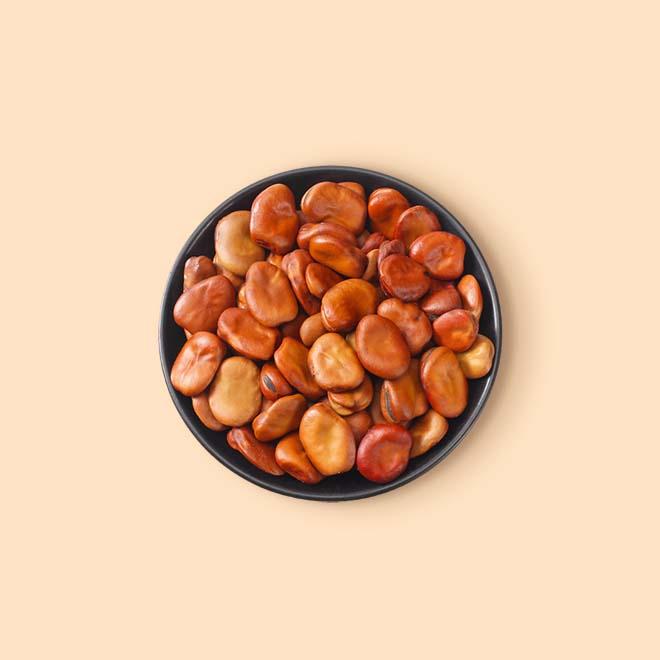Fava Beans




Fava beans, also known as broad beans, are an exciting member of the legume family. They boast a rich history, a unique flavor profile, and endless culinary possibilities.
Fava beans have been cultivated for millennia, with evidence of their presence in the Middle East and Mediterranean regions dating back over 6,000 years.
They possess a distinct, slightly sweet, and earthy flavor with a creamy texture when cooked. They can be enjoyed fresh, dried, or frozen.
When buying fresh fava beans choose pods that are firm, bright green, and free from blemishes or wrinkles. Avoid pods with yellowing or brown patches, indicating age or potential spoilage. Smaller pods tend to have sweeter and younger beans, while larger ones might be older and slightly tougher.
Fresh fava beans will stay fresh for up to 2 weeks in the pantry if unshelled. Shelled fava beans should be kept submerged in water with some lemon juice and stored in a refrigerator for up to 3 days.
Dried fava beans can last for several months in the pantry. They don’t require overnight soaking before use, just a 30-minute soak in hot water is enough to soften them.
The starch in fava beans can be extracted and processed into natural adhesives for various applications. Imagine using fava bean glue to repair furniture, bind books, or even create eco-friendly art projects!
Some traditional practices utilize fava bean paste as a natural exfoliant and skin cleanser. Its gentle abrasive texture and potential anti-inflammatory properties might offer alternative skincare solutions.
Some theories suggest that Pythagoras, the ancient Greek mathematician, banned his followers from eating fava beans. Reasons might range from potential toxicity to symbolic reasons related to reincarnation.
Italy has a tradition of eating "lucky" fava beans on New Year's Day for good luck and prosperity. They're said to represent coins, bringing wealth and fortune in the coming year.
Remember Jack and the Beanstalk? Fava beans were likely the inspiration for the magical beans in the famous fairy tale, highlighting their association with growth and potential.
Fresh fava beans sport two layers - the outer pod and the inner skin. Blanch them in boiling water for a minute, then plunge into ice water. The pod will slip off easily, and the inner skin can be gently rubbed off for a smoother experience.
To retain vibrant color and a creamy texture, simmer peeled fava beans in broth, water, or even milk for around 10-15 minutes. This works well for salads, dips, and soups.
Craving a spreadable delight? Mash cooked fava beans with lemon juice, olive oil, garlic, and herbs for a delicious hummus-like dip or spread. This versatile creation can be enjoyed with bread, crackers, or even vegetables.
Fava beans are a fantastic source of plant-based protein, essential for building and repairing tissues, and keeping you feeling full and energized. One cup boasts about 13 grams of protein, comparable to a serving of meat!
Packed with dietary fiber, fava beans support digestive health, manage blood sugar levels, and promote feelings of satiety. These beans are a rich source of folate, crucial for healthy cell growth and development, especially during pregnancy. They also offer vitamin C, important for immunity and antioxidant protection, and B vitamins for energy metabolism and nervous system function.
Fava beans are loaded with minerals like manganese, essential for enzyme function and bone health, and iron, vital for oxygen transport and energy production. Plus, they contain potassium, which helps regulate blood pressure and muscle function.
Corrections or improvements? Email us at
content@sidechef.com